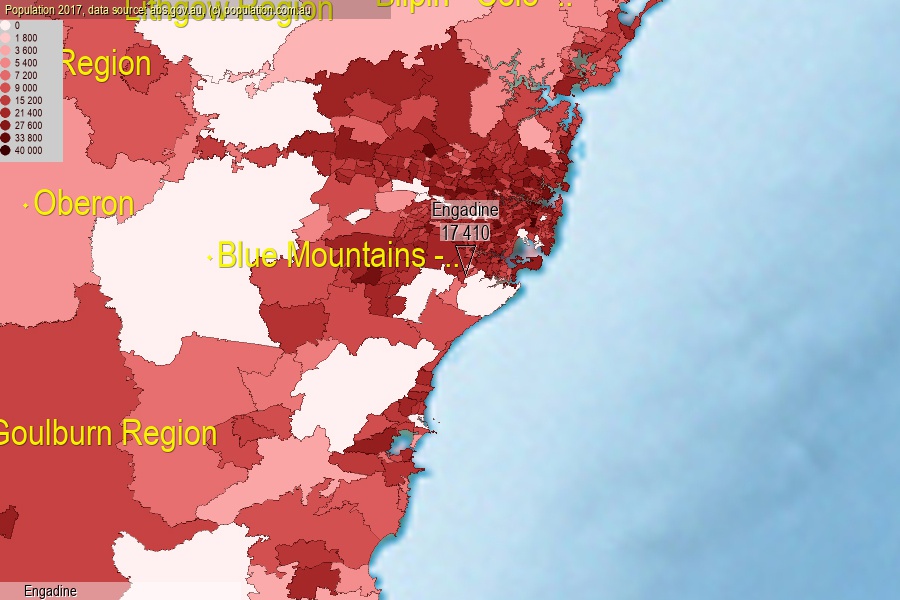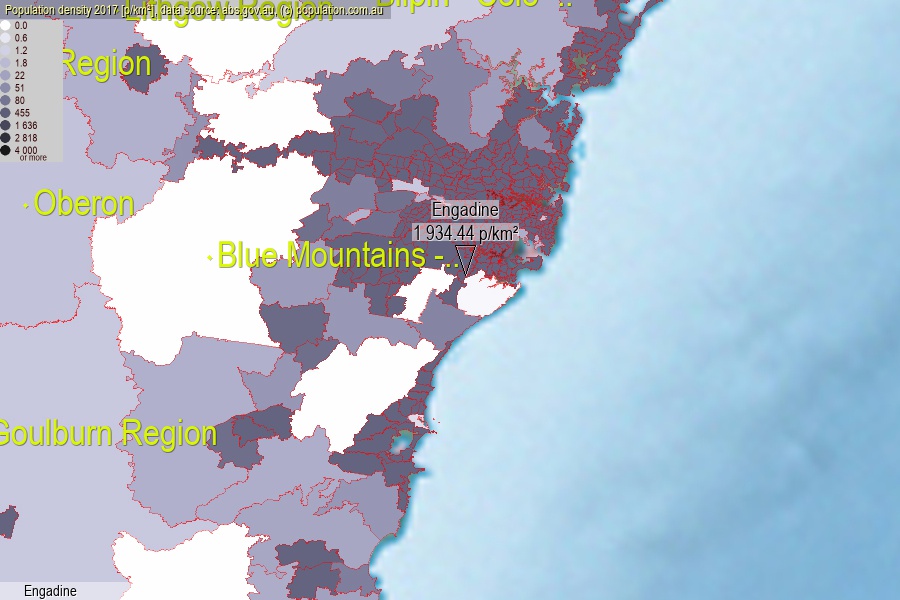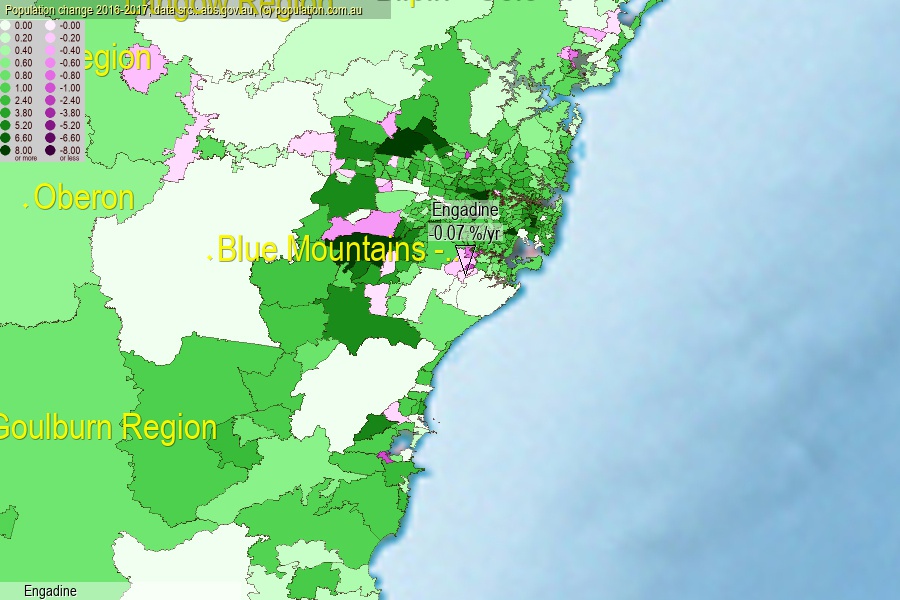 population.com.au
population.com.auLast official estimated population of Engadine (as Statistical Area Level 2) was 17 410 people (on 2017-06-30)[2]. This was 0.07% of total Australian population and 0.219% of NSW population. Area of Engadine is 9.00 km², in this year population density was 1 934.44 p/km² . If population growth rate would be same as in period 2016-2017 (-0.07%/yr), Engadine population in 2025 would be 17 314. [0]



Click to enlarge. Engadine is located in the center of the images.
Population [people], population density [p./km²] and population change [%/year] [2]
View borders » (new window) [4]
[2001-2002] -0.35 %/Yr.
[2002-2003] -0.63 %/Yr.
[2003-2004] -1.26 %/Yr.
[2004-2005] -1.11 %/Yr.
[2005-2006] +0.07 %/Yr.
[2006-2007] +0.18 %/Yr.
[2007-2008] +1.73 %/Yr.
[2008-2009] +1.85 %/Yr.
[2009-2010] +0.30 %/Yr.
[2010-2011] +0.19 %/Yr.
[2011-2012] +0.17 %/Yr.
[2012-2013] +0.23 %/Yr.
[2013-2014] +0.23 %/Yr.
[2014-2015] +0.16 %/Yr.
[2015-2016] +0.31 %/Yr.
[2016-2017] -0.07 %/Yr.
[0] Calculated with linear interpolation from officially estimated population
[1] Read more about SA2 and Australian Statistical Geography Standard (ASGS) on abs.gov.au
[2] Population data from Australian Bureau of Statistics (Population and density: 2017; change: 2016-2017)
[3] Digital Boundaries: Australian Statistical Geography Standard (ASGS) 2016.
[4] Border coordinates are simplifyed using Ramer-Douglas-Peucker algorithm.